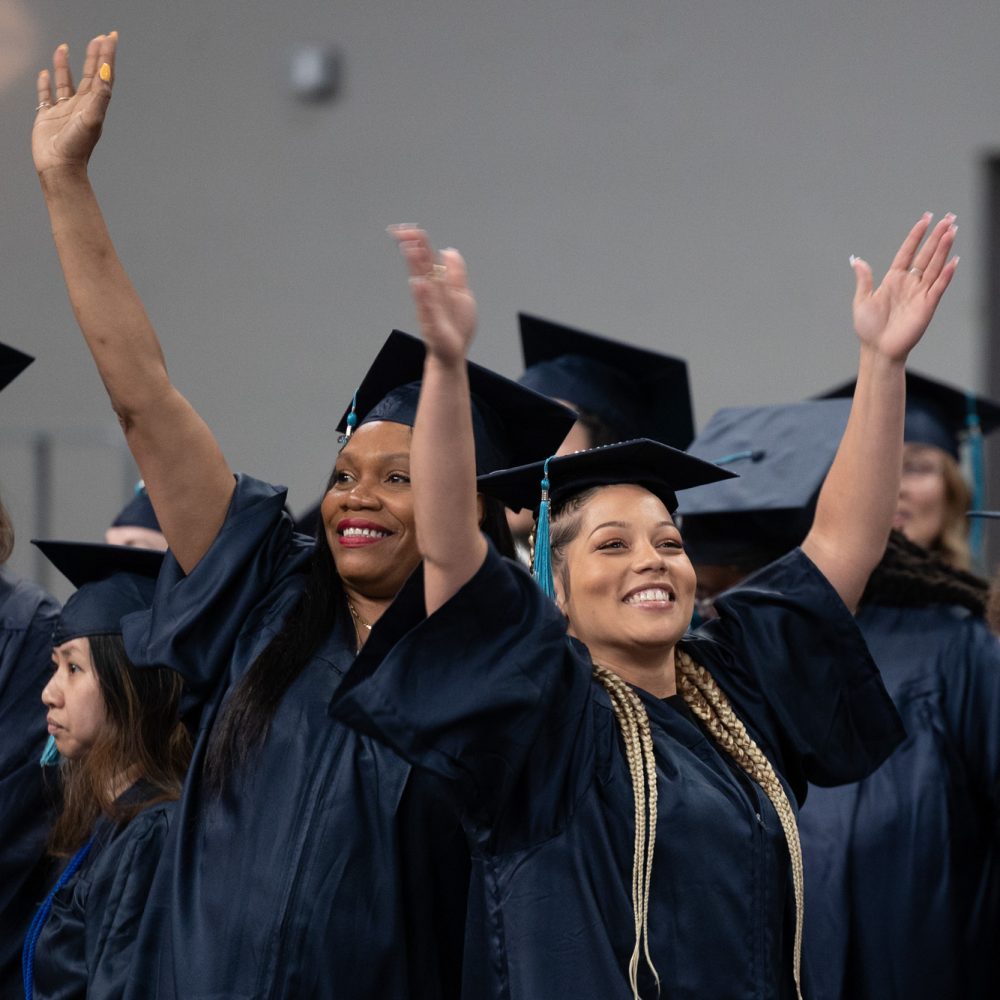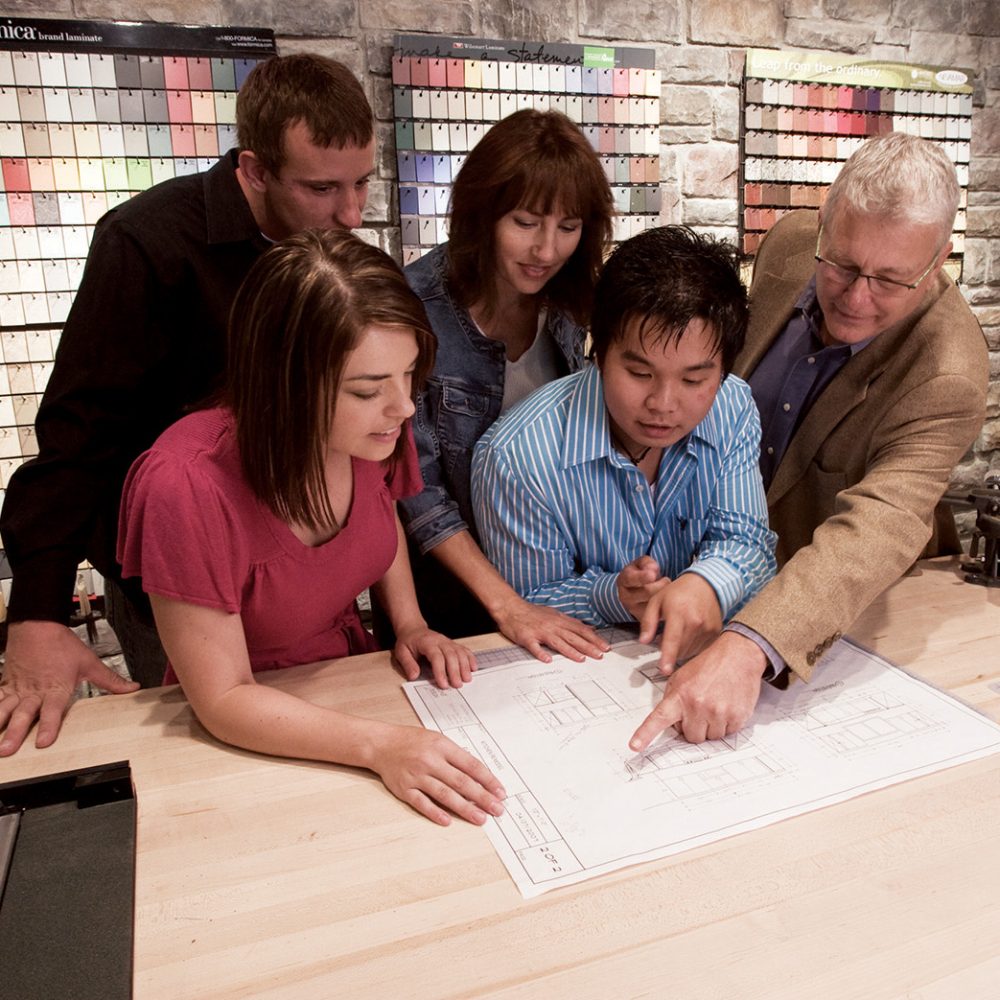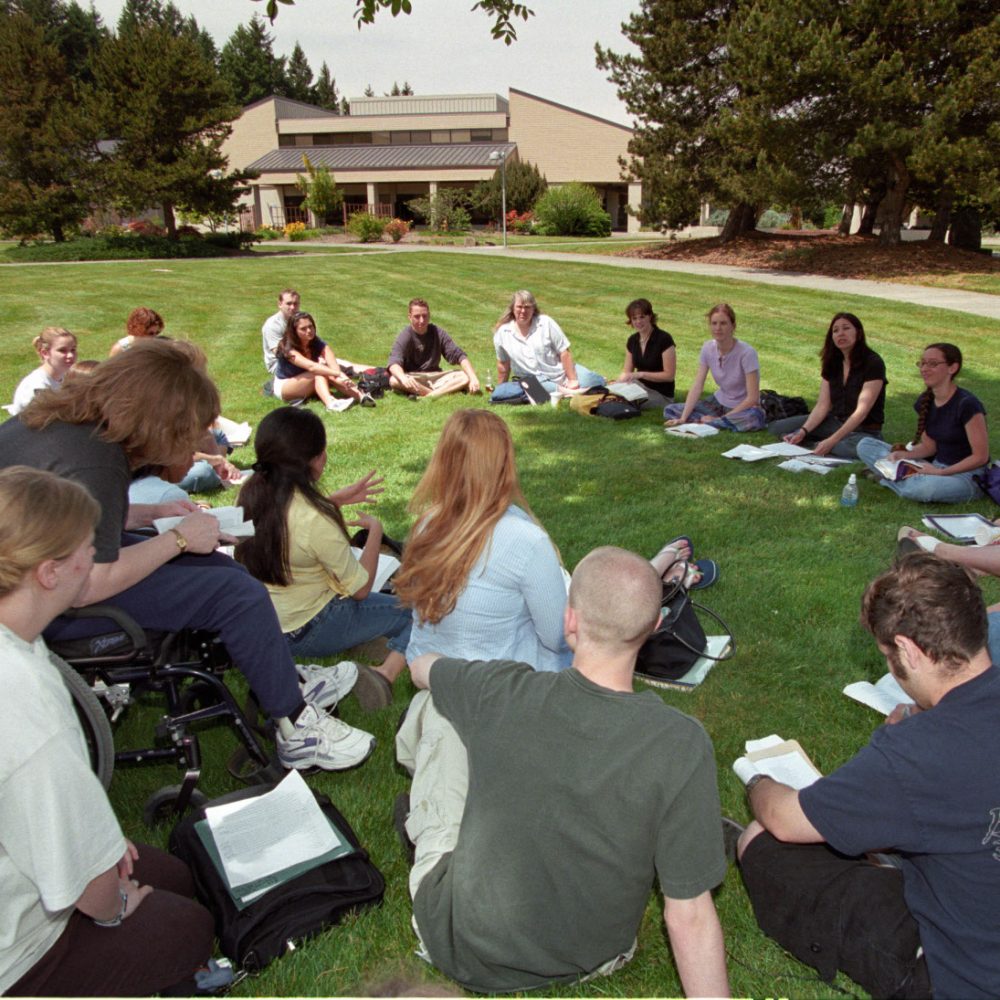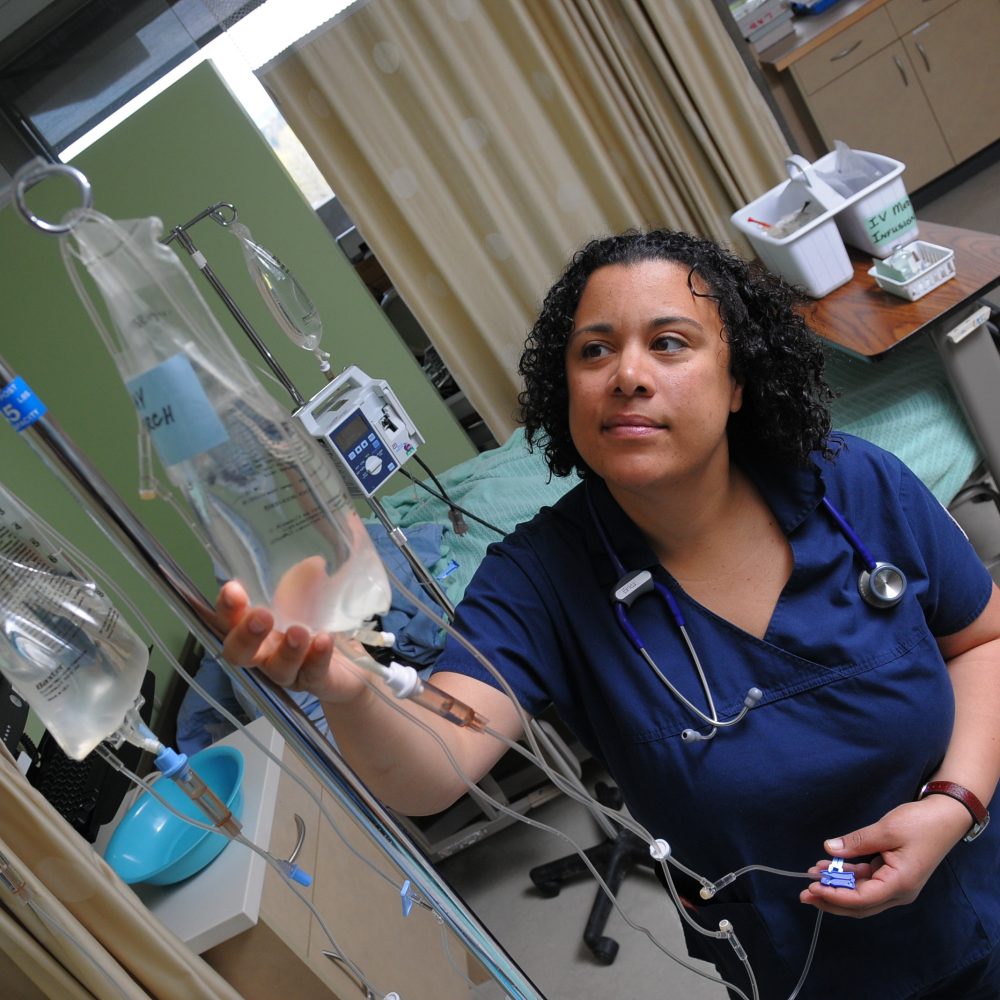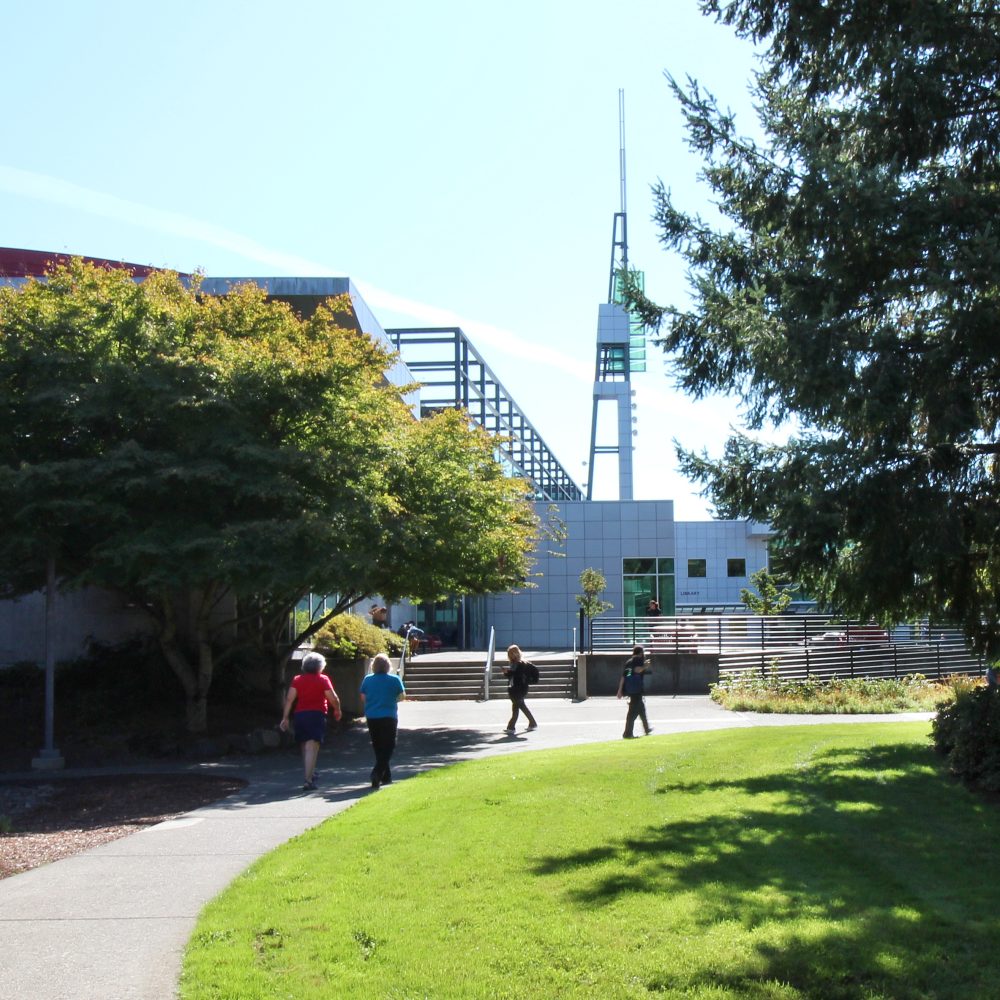Homepage

Quarterly update sessions
Join us for an update on our Strategic Planning projects and our shift to an annual review process. This new process is designed to ensure our plan remains relevant and responsive to the evolving needs of our college.
PCC’s 2025-2028 strategic plan consists of:
- Six themes and aspirational statements that provide a shared focus that guides all college initiatives. These themes ensure that work—whether district-wide or within a single department—contributes to common goals. By aligning efforts under these themes, we move together in a clear and unified direction.
- Four goals that provide the blueprint for our future and focus our efforts on the priorities that students, employees, and the Board collectively determined are most important to the college’s future.
- Six project proposals that outline implementation plans—what the project will produce and how it will benefit the college, as well as timelines, anticipated impact, level of complexity, and how we will measure success along the way.
Letter from the President
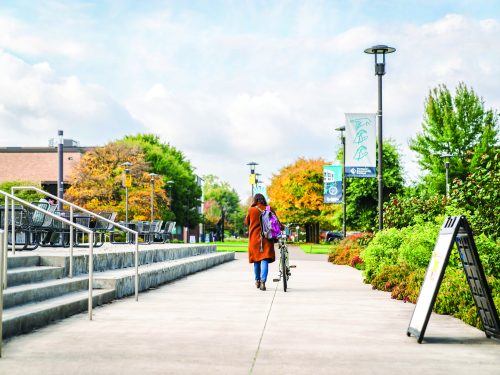 Dr. Adrien L. Bennings
Dr. Adrien L. Bennings
President, Portland Community College
As we launch “The Rising Tide of Change: 2025 – 2028,” I am filled with optimism for the future of PCC. This Strategic Plan represents countless hours of collaboration, dialogue, and reflection across our vibrant community. Guided by our commitment to equity, access, and excellence, we have charted a path that places student success at the heart of all we do while embracing innovation and resilience to meet the evolving needs of our community.
By engaging faculty, staff, students, and community partners, we have identified the core priorities that will shape PCC’s trajectory over the next three years. Together, we envision a college that anticipates the needs of our students and workforce, fosters a culture of belonging and inclusivity, and ensures effective practices. Our goals, informed by data and grounded in our mission, reflect the shared aspirations of our community to provide transformative educational experiences and promote economic and social mobility.
The Board of Directors has been an integral part of this process, participating in the sessions to provide insight and feedback as we shaped our vision for the future. Their approval of the plan’s themes, goals, and objectives underscores their commitment to ensuring that PCC remains a leader in accessible, high-quality education.
As we embark on this journey, I invite each of you to stay connected to the work ahead. This plan is not just a document – it is a shared commitment to our values and a promise to future generations.
Let us continue to innovate boldly, collaborate deeply, and strive for excellence.
Thank you for your unwavering dedication to this extra- ordinary institution and to the students and communities we serve.
About the strategic plan
Through the implementation of our Strategic Plan, Portland Community College will ensure equitable access, opportunity, affordability, and success for all students. We will balance our commitment to quality learning experiences and economic and workforce development.
We will preserve the authenticity of our reputation and articulate the value of PCC throughout the community, and we will cultivate an environment where the tenets of diversity, equity, and inclusion are intentional, consistent, evident, and effective.
Mission
Portland Community College supports student success by delivering access to quality education while advancing economic development and promoting sustainability in a collaborative culture of diversity, equity, and inclusion.
President’s Vision
Portland Community College, as ‘the community’s college,’ serves in excellence as a conduit of empowerment to advance lifelong learning and economic and social mobility for all.
Core Values for Transformative Change and Innovation
- Diversity, Equity, and Inclusion: Supporting a diverse population is crucial for PCC’s future. Ensuring diversity and accessibility in innovations is essential
- Student-Focused Supports and Services: Expanding teaching resources, financial support, and services for distance learners is essential.
- Community Building: Enhancing connections through social events, clubs, and resources.
- Integrity, Fairness, and Honesty: Emphasizing transparency, respect, and honesty in all practices.
- Adaptability and Thoughtful Stewardship: Emphasizing flexibility and sustainable practices.
- Excellence in Education: Providing high-quality, student-focused education.
- Positive Work Environment: Addressing employee morale through shared governance and equitable practices.
Planning process
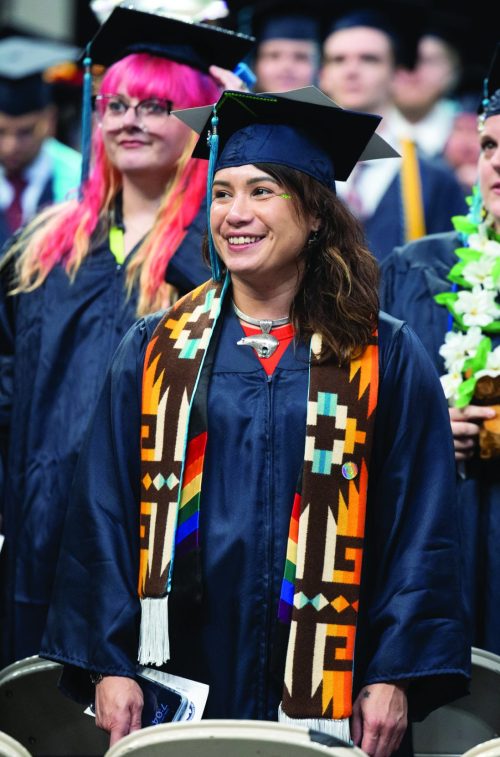 Collaboration was at the heart of PCC’s process. The PCC community began to build our Strategic Plan through twenty-four deep-dive conversations and engagement opportunities throughout 2024.
Collaboration was at the heart of PCC’s process. The PCC community began to build our Strategic Plan through twenty-four deep-dive conversations and engagement opportunities throughout 2024.
Community engagement included:
- During Winter Term 2024, PCC led 24 deep-dive conversations, combined with a broadly distributed survey, resulting in 769 staff and faculty member and 649 student responses
- Six Strategic Themes and aspirational statements were developed and approved by the board of directors, drawing from the input collected from staff, faculty, students and community partners
- Across the college, employees participated in identifying their department, division, and college unit imperatives, which were developed into fleshed-out goals and objectives
- Students, staff, faculty, and board members prioritized the proposed goals and objectives, with 960 students, 365 employees, and 5 board members participating
- The four goals with the highest priority rating across three groups – students, employees, and board – were identified and approved by the board in January 2025
Themes and aspirational statements
fa solid fa piggy bank Operational Excellence
Efficiency, Effectiveness, and Fiscal Sustainability: We are a high-performing institution, achieving long-term fiscal sustainability through implementing best practices in our financial and reporting systems, streamlining administrative processes, and attracting alternative revenue sources.
fa solid fa people group Shared Values
People, Connectedness, and Empowerment: Through a human-centered approach, we foster a vibrant college community, by cultivating a sense of belonging and care through shared governance, professional development, and transparency in decision-making.
fa solid fa chart diagram Technological Transformation
Agility, Innovation, and Readiness: Through a forward-looking mindset we maintain a sustainable technology infrastructure, supporting instructional and operational readiness, enabling the college to remain agile in the evolving higher education environment.
fa solid fa hand holding heart Holistic Student Support
Integrated, Affordable, and Accessible: We provide holistic student support by integrating comprehensive wrap-around services, support for basic needs, and financial assistance, creating a supportive environment where every student thrives.
fa solid fa graduation cap Academic Excellence
Student Success, Delivery, and Programming: As an institution of choice, our diverse modalities, equity driven student-centered approach, and robust academic and career pathways empower students to achieve economic mobility, enhanced by quality instruction grounded in inclusive teaching practices, and strategic enrollment planning practices.
fa solid fa handshake Community Engagement
Workforce, Education, and Industry Alignment: We maintain strong partnerships with community, education, and industry partners, offering premier workforce and training programs, collaborating to address regional employment needs to increase local economic growth, supporting underserved communities, and ensuring workforce readiness and living wages for our students.
Goals and objectives
PCC’s Board of Directors approved the 2025-2028 Strategic Plan goals in January 2025. These four goals provide the blueprint for our future and the priorities that will propel the college forward.
Goal 1
New Student Onboarding
- Theme: Holistic Student Support
- Objective 1: Redesign New Student Orientation experience and learning outcomes that align with the First Year Experience, ongoing student engagement, and just-in-time information for all credit and academic noncredit incoming students.
- Objective 2: Optimize the use of existing student support technology, as part of the new student onboarding experience.
- Objective 3: Develop onboarding processes that are accessible, available in multiple languages, and informed by culturally responsive, identity-affirming, and trauma-sensitive practices, starting with the “steps to enroll” webpages.
Goal 2
Fully Implement Strategic Course Scheduling
- Themes: Operational and Academic Excellence
- Objective 1: Fully Implement Strategic Course Scheduling recommendations and move to an annualized schedule to increase fill rates, utilization of data, and improve operational practices.
Goal 3
Fully Implement Guided Pathways
- Themes: Academic Excellence, Holistic Student Support
- Objective 1: Create a program map of all academic programs and transfer disciplines.
- Objective 2: Create and pilot a mechanism for continuous improvement of Pathway Teams.
- Objective 3: Design a continuous improvement framework for assessing program map functionality and performance.
Goal 4
Increase Student Scholarships and Funds for Wrap-Around Supports
- Theme: Holistic Student Support
- Objective 1: Cultivate and sustain thriving philanthropic partnerships that significantly increase revenue to address unmet student needs.
- Objective 2: Grow and engage donors and funding partners through acquisition, renewal and retention.
Implementation
Project Proposals
Using the college’s approved strategic plan themes, goals, and objectives, departments have submitted six project proposals:
- Three projects for new student onboarding
- One project for strategic course scheduling
- One project for Guided Pathways
- One project to Increase scholarship support to meet student need
Read more about the project proposal development process
Each proposal outlined project expectations, timelines, and deliverables.
As part of this process, the Strategic Planning Manager worked with the Application Systems, Support, and Project Management Team to collaborate on projects within Academic and Student Affairs portfolios aligned with the approved goals.
Review of Proposals
In May 2025, the President’s Cabinet will review the drafted proposals. A Balanced Scorecard will be used to evaluate proposals with a focus on equitable student success completing a rubric consisting of seven categories. Proposals meeting strategic objectives and standards will proceed to project plan development in Summer 2025, while those requiring additional work will be refined further.
Read more about the rubric used to evaluate proposals
- Student Impact: Will this project increase the College’s ability to attract, retain, or graduate students?
- Student Experience: Will this project enhance the student’s learning experience, access to resources, or information?
- Identity, Culture, & Community (Belonging): Project directly supports conveying the College’s identity, culture, and principles towards a welcoming and accessible campus.
- Codes, Regulations, Policies, & Guidelines (Compliance): Is this project necessary to support the College in meeting institutional goals, regulatory codes, or accreditation standards?
- Operational Excellence: Is this project critical for mitigating spaces, systems, or hardware that is past useful life or in substandard condition?
- Relationships: Rates how the project contributes to student, faculty and employee morale, culture, and engagement.
- Financial Viability (if applicable): Project clearly shows a ROI (Return on Investment), or long-term cost savings to the College.
Project Development
The project development process begins with assigning a Project Manager (PM), identifying Functional Managers (FM), and forming project teams for each project, ensuring clear assignment of roles and responsibilities. The FM oversees the department(s) for the related project(s).
Read more about the project development process
The PM and FM, along with technical leads and subject matter experts, will work together to develop key project documents, including:
- Project Charter – Defines the project’s purpose, scope, and objectives.
- Work Breakdown Structure – Outlines tasks and deliverables.
- Project Timeline – Establishes key milestones and deadlines.
- Execution Plan – Details implementation steps, including communication, training, and documentation strategies.
Project teams will collectively review and sign off on these documents before the project moves forward. The process will be used for projects both inside and outside of the Academic Affairs / Student Affairs portfolio, but a PM for projects outside of Academic Affairs / Student Affairs will be assigned from their functional area.
Kick-off and Execution
Project kick-off will be scheduled with bandwidth and capacity taken into consideration. When ready, the project team will hold a kick-off meeting to align on expectations and ensure readiness for execution.
Read more about project kick-off and execution
The team will meet regularly to:
- Track progress against the plan
- Assess quality, budget adherence, and goal achievement
- Make necessary adjustments to keep the project on course
Regular project status reports will be shared with the President’s Cabinet and the broader college community for transparency.
Project Completion
The project team will verify that all goals have been met according to the agreed-upon plan.
Read more about the project completion process
A project closure meeting will be held to:
- Reflect on successes and challenges
- Gather feedback from the project team
- Identify insights and lessons learned for future projects
- Determine how to integrate improvements into future project management processes
This structured approach will ensure strategic alignment, accountability, and continuous improvement in project execution for the Strategic Plan.
Reflecting on the 2020-2025 Strategic Plan
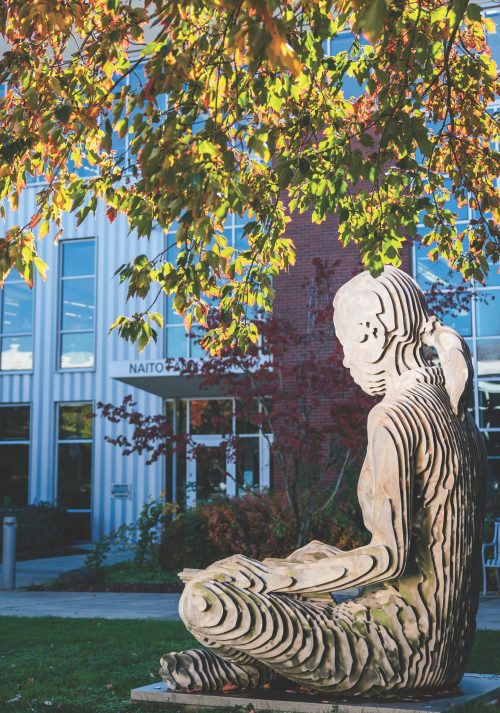 Over the past five years, PCC has made significant progress toward building a more equitable, student-centered institution. Through the 2020–2025 Strategic Plan, we expanded online learning, strengthened career-connected education, increased support for underserved students, and improved our data and technology infrastructure
Over the past five years, PCC has made significant progress toward building a more equitable, student-centered institution. Through the 2020–2025 Strategic Plan, we expanded online learning, strengthened career-connected education, increased support for underserved students, and improved our data and technology infrastructure
These accomplishments were made possible by the dedication of faculty, staff, and students across the college.
Read more about our 2020-2025 achievements.
Questions? Contact Sarah Rose Evans, Strategic Planning Manager, at sarah.roseevans@pcc.edu.

